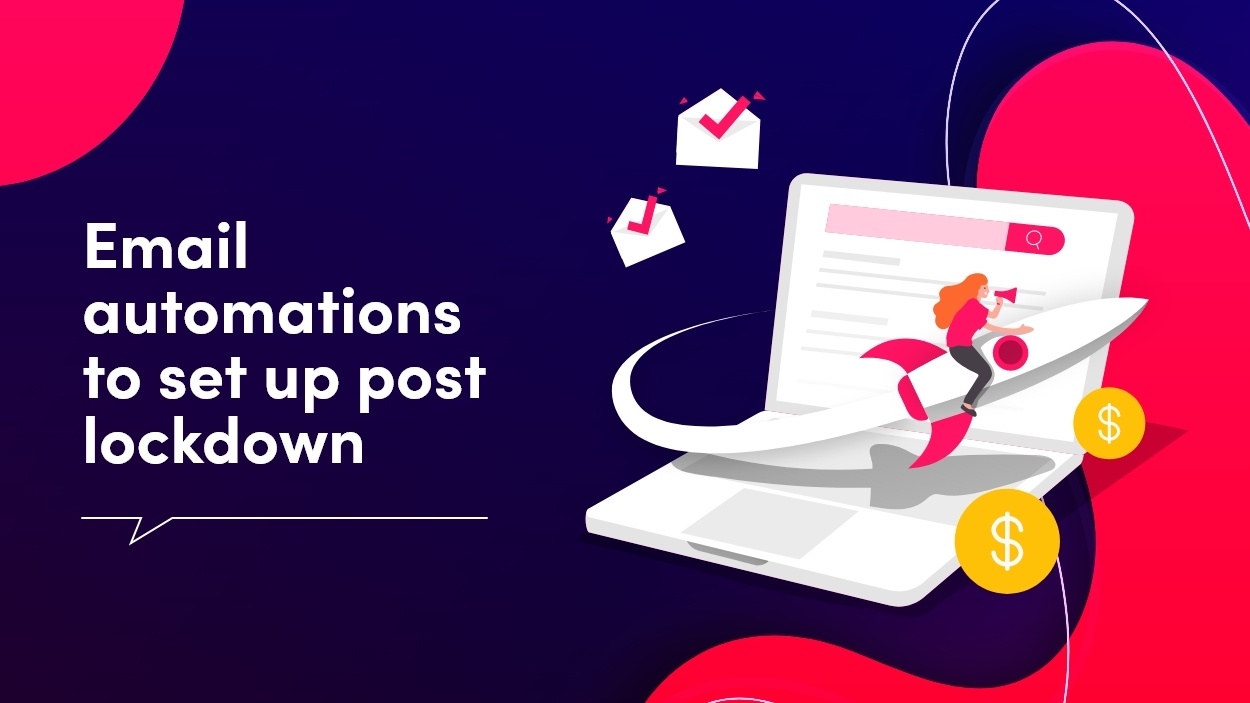It would be an understatement to say that 2020 so far has been a rollercoaster for merchants.
What started off as massive fluctuations in product demand meant that suppliers were often unable to fulfill orders. Then lockdowns started and merchants had to close any bricks and mortar stores they had.
Unfortunately, many parts of the world are still in lockdown as they are still attempting to flatten the curve of the first wave of coronavirus.
Other regions that have successfully mitigated the situation are emerging from lockdowns. In these areas, merchants are reopening stores as people start to return to their normal routines.
Whatever situation your store is in, providing a great, reliable customer experience is challenging.
Email is a tool, however, that can help with achieving this.
Even more helpfully, email automation can provide great customer experiences with virtually no ongoing effort for you.
So whether your store is emerging from lockdown, or if that is still a while away, here are 5 email automations you’ll want to have set up right now.
Must-have email automations you should set up today
Back in stock notifications
Stock availability and unpredictable consumer demand are two common challenges that are making it difficult for merchants to provide a reliable customer experience.
Not only is going to buy a product only to find that it’s out of stock a frustrating experience for customers but it also means you’re missing out on a sale as a merchant.
While you likely have little control over supply chains, there is one thing you can implement that will mitigate this situation: back in stock notifications.
These notifications will mean that if a product becomes unavailable, customers will have the option of leaving their email address to receive a notification when the product becomes available again. Such as in the two examples below.
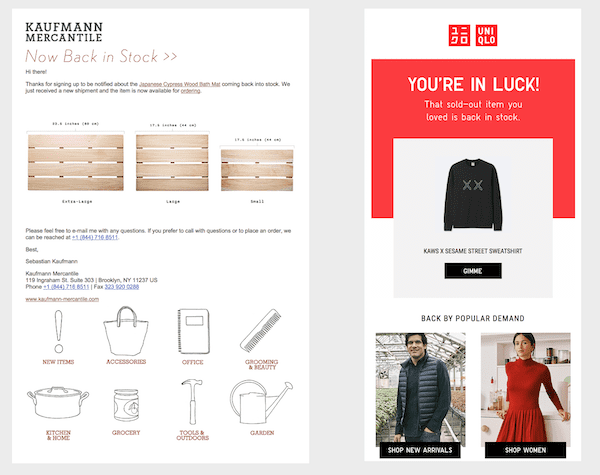
This provides both a much better customer experience and gives you a better opportunity to close the sale once you have the products back in stock.
Welcome emails
Welcome emails are something that every merchant should have already automated, but they’re even more important during these times.
In case you’re unaware, welcome emails are simply emails that are sent to people immediately after signing up to your email list. Often there’ll also be subsequent emails sent a few days or even weeks later that form what is known as a welcome email series.
This means they provide the perfect opportunity to inform new customers or subscribers with the latest information you have.
This could include:
- Whether you’re experiencing delays in getting orders to customers
- Whether your physical store is open or closed temporarily
- If it’s closed, whether there’s any potential date for reopening yet
- If it’s open, what your opening hours are and whether there are any restrictions on the number of people you can have in-store at once or whether people need to make an appointment etc.
By making it clear in your welcome emails that you’re still open for business (even if it’s online only) and how customers can support your business, you’re increasing the chances that new subscribers will purchase from your store.
Of course, if you already have welcome emails set up, now’s the time to review them to make sure they’re still relevant if you haven’t done so already.
Thank you emails
You probably already thank customers after they make a purchase in-store.
Thanking customers for their purchase when it’s made online is a bit tricker though. But that’s where thank you emails become useful.
Not to be confused with order confirmation emails, thank you emails are simply emails that are automatically sent to customers after they make a purchase to simply say ‘thank you’. Like in the example below from Allbirds.
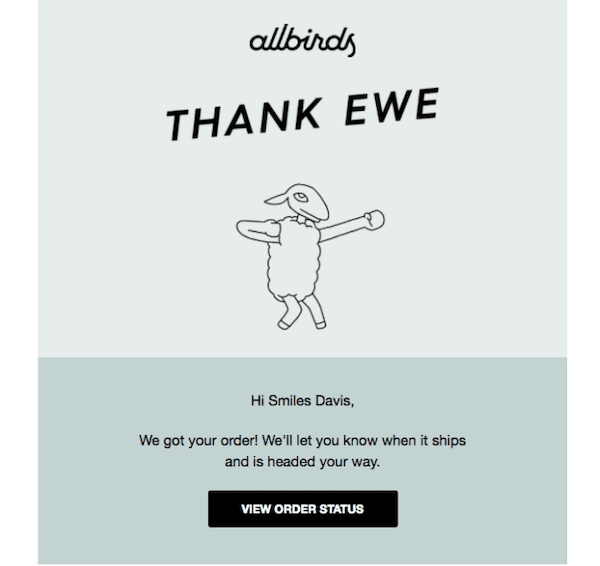
Unlike order confirmation emails which should be sent immediately after a purchase goes through, thank you emails can be automated to send a few days afterwards.
Just like welcome emails, this is a type of automation you should always have running, but when so many people are struggling and feeling isolated, showing appreciation has never been more important.
Abandoned cart emails
Abandoned cart recovery emails are a type of email automation that’s sent to people who have added items to their cart but failed to check out. Hench the term ‘abandoned cart’.
These emails serve as a reminder to people of the items they’ve left in their online shopping carts, prompting them to hopefully come back and complete the transaction.
While most merchants selling online already have this automated, if, for whatever reason you haven’t, now’s the time to do so.
One of the many effects of coronavirus has been a surge in online shopping.
Even as restrictions ease and physical retailers are able to reopen, many people are still preferring to shop online to maintain social distancing.
With so many more people shopping online and a variety of new retailers offering online ordering, abandoned carts are only likely to become a bigger problem for merchants.
By automating abandoned cart emails though, you’ll be recapturing a large amount of these otherwise lost sales. Whether your store is still under lockdown or has reopened, this is a no-brainer.
Some email service providers, like SmartrMail, also let you add personalized product recommendations at the bottom Best Buy does in the email below.
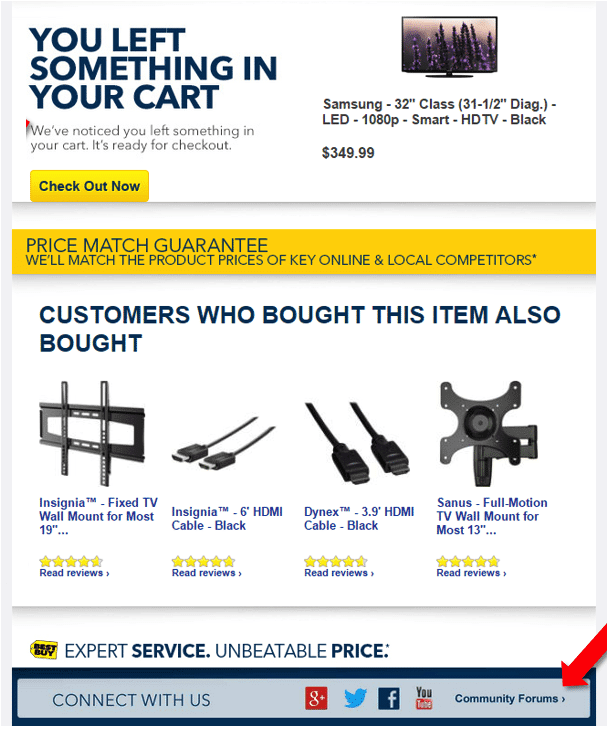
Adding these extra recommendations will help increase your average order value as some customers will add an extra item or two to their cart.
Win-back emails
With all the disruption to people’s lives, it’s inevitable that you’ll have unfortunately lost some valuable customers.
Even without the coronavirus, once loyal customers will eventually stop purchasing from your store.
As the name suggests, win-back emails attempt to win these people back by sending a timely email that contains an incentive.
For example, if someone usually purchases from you every few months, but it’s been over six months since their last purchase, then a win-back email is triggered to send automatically. Just like in the example below from Sephora.
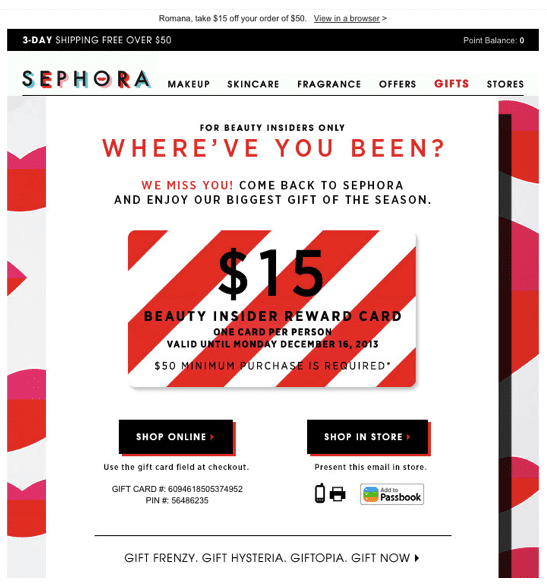
Recovering with email marketing
These are not the only email automations that can help with recovering from coronavirus-related restrictions, but they’re an excellent starting point.
The advantage of email automation is that once you set it up, you don’t have to do anything else apart from the occasional check-in to make sure everything is still working fine.
But the strengths of email isn’t just limited to automation.
Sending regular newsletters to keep your subscribers informed about what’s going on goes a long way.
Even though it might mean a bit more ongoing effort, by continuing to communicate with your customer base, you’ll keep them engaged and your brand top-of-mind. That way you’ll be in a much better position to ‘bounce back’ once things return to normal.
Author bio
Aaron Wiseman is a marketing coordinator and content writer for SmartrMail. SmartrMail is the easiest way to send email that delights your customers and gets more sales. The app is available for merchants on Shopify, WooCommerce, BigCommerce, PrestaShop, and Neto.

